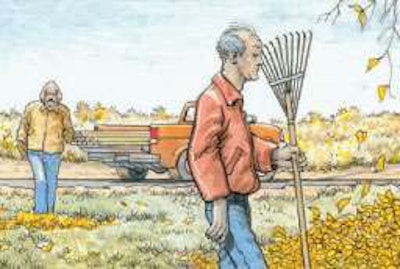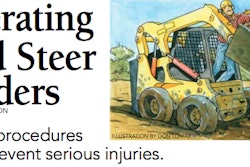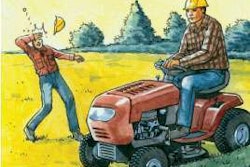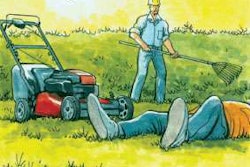
The accident: A 64-year-old landscaping crewmember begins shivering and experiencing poor coordination as he rakes leaves at a residential jobsite. The day has turned colder than expected, and the man is wearing only a light jacket over his company shirt and jeans with no headgear. Earlier, he was inadvertently sprayed with water while helping winterize a water feature, and his clothing is still damp. Feeling mildly confused and lethargic, the worker, who has diabetes, checks his blood sugar, finds it normal and returns to his task. But a co-worker later notices him shivering uncontrollably and staring at a pile of leaves. The co-worker asks if the man is OK and doesn’t understand the slurred response. He calls 911, and an ambulance takes the man to the hospital, where he is treated for moderate hypothermia.
The bottom line: Hypothermia, a potentially fatal condition, can occur even when temperatures are above freezing, especially if you’re wearing wet clothing or are exposed to brisk winds. Wind and moisture rob the body of core temperature. For example, when the temperature is 40-degrees Fahrenheit and wind speed is 35 mph, conditions for exposed skin are equivalent to a still-air temperature of 11-degrees Fahrenheit.
Certain conditions and factors increase your susceptibility to hypothermia. They include consuming nicotine, caffeine or alcohol; taking medication that inhibits the body’s response to cold or impairs judgment; having a cold, diabetes or heart, vascular or thyroid problem; and being older – people become more vulnerable to cold-related illness as they age.
Signs of hypothermia include shivering, blue lips, trouble speaking, confusion, lack of coordination and fatigue. If you experience symptoms, go to a warm place, drink something warm and move your arms and legs to create muscle heat.
To prevent hypothermia:
• Layer clothing. An inner layer of synthetic fiber such as polypropylene wicks perspiration away from skin; a middle layer of wool or synthetic fabric absorbs perspiration and retains warmth and an outer layer of nylon protects against wind and allows ventilation.
• If water gets on your body, change into dry
gear immediately. Store a plastic bag with extra gloves, hat, socks and coat in the vehicle that takes you to jobsites.
• Find headgear designed to prevent heat loss – hats that also cover the ears and neck and are made of wool or a knit material with a wind- proof outer shell – at sporting goods suppliers and army surplus stores.
• Wear waterproof, insulated boots. Place wool socks, which absorb moisture, over polyure- thane socks, which wick away moisture.
• Drink warm, non-caffeinated beverages, and take breaks in a heated space.









